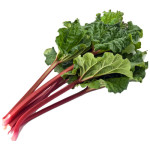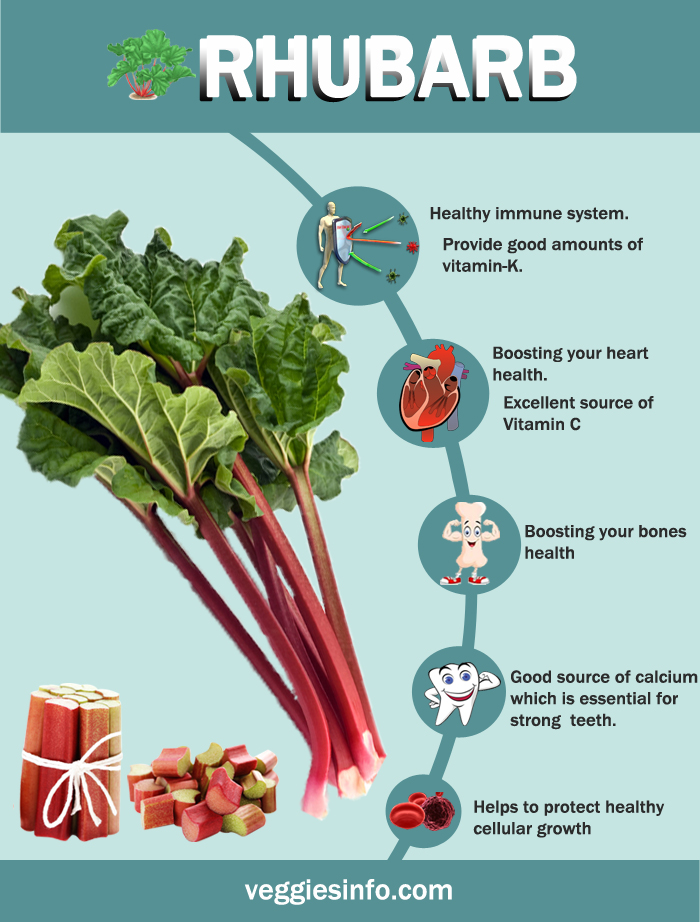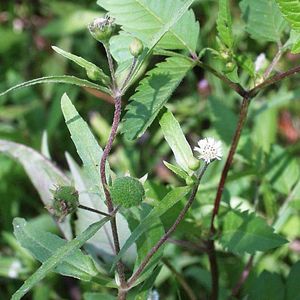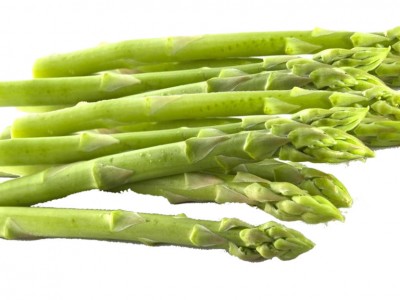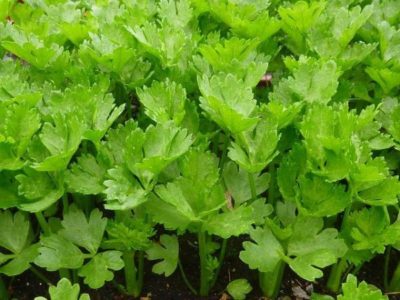

Rhubarb aka ridged gourd
About Rhubarb : Health Properties & Nutrition Values
Scientifically known as Rheum rhabarbarum; rhubarb belongs to Rheum genus and the family of polygonaceae. This is a very attractive looking vegetable triangular shaped green leaves and red stalks with flowers that grows like a leafy cluster of greenish white or red in color. This plant is perennial in nature and needs cold weather to survive in. To make it available throughout the year in the markets for consumption rhubarb needs to be grown in green houses or hot houses during the absence of outdoor cultivation. The indoor cultivated rhubarb is far better tasting than that of outdoor rhubarb as the stalks are brighter in colour and tender in texture. The first rhubarb of the year is planted in candle light enforcing the growth of it, a practices that is believe to produce sweeter rhubarb ; this is followed in UK. The leaves of the plant are dotted at the shreds in rhubarb triangle. Rhubarb triangle is a place in U.K where the growth of rhubarb is forced; an area located between Morley, Rothwell and Morley forming a triangle. This practice was introduced by many small holders and farmers where domestication of rhubarb was started in UK. It is also mentioned in a classic named ‘The Divine Farmers Herb Root’; a book written and compiled 2700 years ago. The Chinese civilisation made use of it for thousands of years for its medical purpose. Used as a form of laxative this was one of the first Chinese medicines that made its mark in the western market.
Rhubarb Nutrition Value
- It holds some vital phyto-nutrients such as dietary fiber, poly-phenolic anti-oxidants, minerals, and vitamins
- Rich in several B-complex vitamins.
- Provide good amounts of vitamin-K.
- Contain healthy levels of minerals like iron, copper, calcium, potassium, and phosphorus.
Rhubarb Benefits
- Rhybarb is a popular herb that has been used for centuries in traditional Chinese medicine, as well as in other forms of alternative medicine. It is an herbaceous perennial plant that grows from rhizomes and has long, spiky leaves and pink to red stalks. The rhizomes and stalks can be used for medicinal purposes.
- Rhybarb has many beneficial properties and is believed to have a variety of health benefits. It is used to treat digestive ailments, such as constipation, indigestion, and irritable bowel syndrome. It is also used to treat colds and flu, as well as to reduce inflammation and increase circulation.
- Rhybarb has been used to treat fever, reduce edema, and improve circulation. It is also believed to help reduce menstrual cramps and improve menopausal symptoms. It can also help reduce stress and improve mood.
- Rhybarb is high in many important nutrients, including vitamin C, calcium, iron, potassium, and magnesium. It is also a good source of dietary fiber, which can help with digestion and lower cholesterol.
- Rhybarb is also believed to have anti-inflammatory and antioxidant properties. It has been used to treat arthritis, skin conditions, and allergies. It has also been used to treat fatigue, depression, and anxiety.
- Rhybarb is believed to be a safe herb, with few side effects. However, it is important to talk to your doctor before taking it. Rhybarb can interact with certain medications, such as blood thinners, and it can also cause stomach upset in some people.
- Rhybarb is a popular herb with many potential health benefits. It can be used to treat a variety of ailments, such as digestive problems, inflammation, and fatigue. It is high in important nutrients and is believed to have anti-inflammatory and antioxidant properties. However, it is important to talk to your doctor before taking rhybarb, as it can interact with certain medications and cause stomach upset in some people.
| Principle | Nutrient Value | Percentage of RDA |
|---|---|---|
| Energy | 21 Kcal | 1% |
| Carbohydrates | 4.54 g | 3% |
| Protein | 0.90 g | 2% |
| Total Fat | 0.20 g | 1% |
| Cholesterol | 0 mg | 0% |
| Dietary Fiber | 1.8 g | 5% |
| Vitamins | ||
| Folates | 7 µg | 2% |
| Niacin | 0.300 mg | 2% |
| Pantothenic acid | 0.085 mg | 1.5% |
| Pyridoxine | 0.024 mg | 2% |
| Riboflavin | 0.030 mg | 2% |
| Thiamin | 0.020 mg | 2% |
| Vitamin A | 102 IU | 3.5% |
| Vitamin C | 8 mg | 13% |
| Vitamin E | 0.27 mg | 2% |
| Vitamin K | 29.3 µg | 24% |
| Electrolytes | ||
| Sodium | 4 mg | 0.5% |
| Potassium | 288 mg | 6% |
| Minerals | ||
| Calcium | 86 mg | 8.5% |
| Copper | 0.021 mg | 2% |
| Iron | 0.22 mg | 3% |
| Magnesium | 12 mg | 3% |
| Manganese | 0.196 mg | 8.5% |
| Phosphorus | 14 mg | 2% |
| Selenium | 1.1 µg | 2% |
| Zinc | 0.10 mg | 1% |
| Phyto-nutrients | ||
| Carotene-a | 0 µg | — |
| Carotene-ß | 61 µg | — |
| Crypto- xanthin-ß | 0 µg | — |
| Lutein- zeaxanthin | 170 µg | — |
Rhubarb is more than just an ornamental plant as it has more nutrition value than one ever imagine. One of raw rhubarb consists of only 26 calories which is very low and qualifies as a low energy density food. Rhubarb consists of 45% of recommended levels of daily intake of vitamin K which is known for increasing bone strength of the body. This also helps in preventing Alzheimer’s and also limits neuronal damage in the body. Vitamin A present in rhubarb helps in protecting eye sight, gives a good skin, and protects the membrane and mucous inside your mouth in order to prevent mouth or oral cancer. Inclusion of riboflavin, niacin, vitamin B promotes good heart and prevents cardio vascular disorders.
Rhubarb consists of oxalic acid, something that one needs to pay extra attention to. People diagnosed with kidney disorder or other kidney related problems as this food might aggravate the situation further leading to dire results. Another word of caution is that the leaves of rhubarb are supposed to be toxic and their consumption by pets or children is strictly prohibited. It contains antioxidants like lycopene and anthocyanins, helping to fight off disease. It apparently can help lower cholesterol, boosting your heart health. Rhubarb stalks are a good source of fibre, benefiting your digestive health. It contains vitamin K, an essential property that helps with blood clotting, protecting the bones and help fighting off liver and prostate cancer. It is also a good source of vitamin C (great for a healthy immune system), calcium, potassium and magnesium.
How To Enjoy Rhubarb
Rhubarb stalks are enjoyed as a part of many pies, pudding and desserts. It can be poached in wine and be accompanied by mascarpone cream as a fine dining dessert.
Rhubarb can also be a part of trifle puddings eaten with fresh fruits and sometimes baked pies of rhubarb and rhubarb jams are something that one cannot get their hands off. Their zesty flavour brings life to any ordinary dish.

